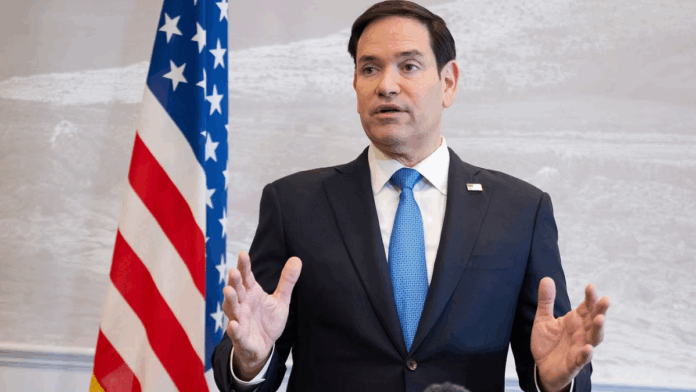U.S. Designation of TRF as a Terrorist Organisation
The United States has officially added The Resistance Front (TRF) to its list of Foreign Terrorist Organisations (FTO) and Specially Designated Global Terrorists (SDGT). This move comes under two key legal tools: Section 219 of the Immigration and Nationality Act for FTO designation, and Executive Order 13224 for SDGT designation.
By grouping TRF with other known aliases under the same terrorist label as Lashkar-e-Taiba (LeT), the U.S. aims to block the group’s access to financial networks. It also freezes any assets it may hold in U.S. jurisdictions.
According to U.S. Secretary of State Marco Rubio, this action highlights President Donald Trump’s strong call for justice after the tragic Pahalgam attack. The designation serves to demonstrate a firm stance against groups that target civilians and security forces.
Rubio said, “TRF and other associated aliases have been added to LeT’s designation as a FTO and SDGT pursuant to Section 219 of the Immigration and Nationality Act and Executive Order 13224, respectively.”
He added, “This action demonstrates the Trump administration’s commitment to protecting our national security interests, countering terrorism, and enforcing President Trump’s call for justice for the Pahalgam attack.”
The U.S. government stressed that TRF and its aliases have a clear record of violence. By treating them the same as the globally banned LeT, U.S. authorities hope to hinder any future plots.
This step also keeps the existing FTO status of LeT in place. It reinforces ongoing efforts to counter terrorism around the world.
Details of the Deadly Pahalgam Attack
On April 22, the TRF carried out a fierce ambush near the town of Pahalgam in Jammu and Kashmir, India. The gunmen attacked a convoy of tourists.
Twenty-six people lost their lives that day. Most of the victims were civilians on holiday. Many were families and friends exploring the scenic mountain resort.
The attackers used automatic weapons to open fire from cover. Security forces rushed to the scene but could not prevent the high casualty count. The incident shocked people across India and beyond.
FATF Slams Pakistan Over Hidden Missile Shipments – Will India Push for Greylisting?
It was described as the deadliest strike on Indian civilians since the 2008 Mumbai attacks by LeT. TRF also claimed responsibility for several other assaults, including recent attacks on Indian security patrols in 2024.
Witnesses spoke of chaos and panic as the attackers fled into nearby woods. Survivors recounted the terror of fleeing under a hail of bullets.
News of this assault spread rapidly on social media and television channels. The scale of the violence prompted calls for swift justice from government leaders and citizens alike.
India’s Retaliation: Operation Sindoor and Global Outreach
In response to the Pahalgam massacre, Indian security forces launched Operation Sindoor on May 7. The mission targeted nine terror infrastructure sites across Pakistan and Pakistan‑occupied Kashmir.
More than 100 militants were reported killed in the coordinated strikes. Each location was struck to disrupt training camps and hideouts tied to TRF and other groups.
India Confronts UN with Explosive Evidence Linking Pakistan-Based TRF to April 22 Terror Attack
Soon after, tensions rose on the border. Pakistan launched drone and missile attacks on Indian territory over several days. Indian forces successfully repelled every intrusion. They also carried out counter‑strikes.
By May 10, Islamabad requested a ceasefire. Both sides stepped back from open conflict, but the episode marked a serious escalation in the region.
Later that month, India sent seven multi‑party delegations to 33 world capitals, including Washington D.C. These groups, which included lawmakers and diplomats, aimed to highlight Pakistan’s links to terrorism.
They met with officials in countries such as the United States, the United Kingdom, and others. The worldwide tour sought to build support for tougher measures against terror networks operating from across the border.
Indian leaders urged the international community to name and shame those who finance and shelter armed groups.
Through these steps, India aimed to strengthen global resolve against groups like TRF. The diplomatic push was matched by quick and forceful military action at home.


